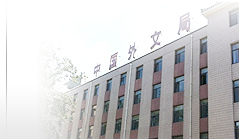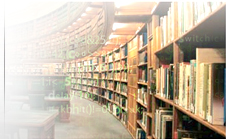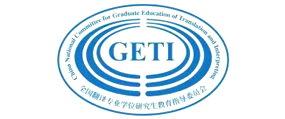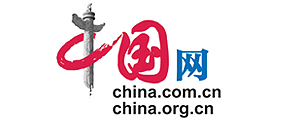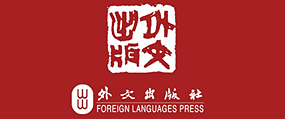目录
理论研究 /
05 《通天塔》与“Beyond” 孙艺风
21 原型理论观照下的翻译单位辨析 冯全功
30 中西口译实证研究:回顾与展望 洪诗谐 陈菁
译史纵横 /
41 释道安译经“失本”态度问题补证 常红星 译介研究 /
48 《洗冤录》西译与“他者”叙事 屈文生 黄赛尔59 十九世纪英文报刊对《三国演义》的译介研究 李海军 李钢
远程翻译专业教学专栏 /
68 翻译专业教学管理与人才培养:新趋势、新变局与新思路 胡安江75 互联网时代的笔译教学:现状、理念与展望 吴青
81 抗疫背景下的远程专业口译教学 张爱玲 丁宁
书刊评介 /
89 视听翻译中幽默语言的处理——Humour in Audiovisual Translation: Theories and Applications评介 陈吉荣 学术访谈 /
95 译学研究的跨学科交融与多元文化互补性——朗贝尔教授访谈录 杜可心 行业研究 /
104 法律翻译者职业伦理构建探索 张法连 李文龙 学术视点 /
113 中西文化会通视域下的“Habitus” 王进 翻译评论 /
120 哲学家视野和致用型翻译——冯友兰英译《庄子》的副文本考察 殷燕 学术争鸣 /
131 《法律英语翻译教程》若干法律术语翻译商榷 蒋开召 实践探索 /
139 《习近平谈治国理政》第一至三卷英译探析 刘奎娟147 词汇触发视角下同声传译的词汇翻译模式——以“问题”为例 张杲 李德超
154 语义对等、语用对等和审美对等——韩素音国际翻译大赛俄汉互译评析(2020) 徐曼琳
162 商务英语同/近/反义词叠用语义探析及翻译 顾维勇 吴奕萱
自学之友 /
170 Foreword to A Sand County Almanac (Aldo Leopold) 曹明伦 译172 达其词,尽其意,传其神——《沙乡年鉴·序言》译后散记 曹明伦
178 我所知道的康桥(下)(徐志摩) 蔡力坚 译
185 翻译中的事实准确性 蔡力坚
词语选译 /
187 党的十九届五中全会公报摘译(一) 英文摘要
192 第三十三届韩素音国际翻译大赛竞赛规则本期主要论文摘要
理论研究
《通天塔》与“Beyond”
孙艺风 澳门大学
孙艺风 澳门大学
摘要:斯坦纳的《通天塔之后》影响深远,在现代翻译理论发展进程中,具有举足轻重的地位。但由于内容生涩难懂,用词冷僻,在一定程度上削弱了进一步的影响力。尽管如此,即使我们承认斯坦纳欠缺原创力,但作为西方翻译思想的集大成者,其历史贡献不容抹杀。由于这部著作的扩散属性,对后来的研究者而言,进一步深入发展的空间相当可观,对当下的翻译研究的借鉴价值也不容小觑。《通天塔之后》问世以来,翻译学者就翻译的本质、规律及各种属性进行了大量的探索性工作,其中“描述翻译学”独领风骚了相当长一段时间,一度俨然成了现代翻译学的标志,影响力不可谓不大。然而局限性似乎日渐显露,面临颓势之虞。通过对斯坦纳和图里翻译理论的历史回顾与总结,可以追溯至现代翻译学的发轫,窥见到不同观点的大致轮廓,并勾勒出其发展的大致走向,从而对这个学科在现代意义上的前世今生,有一个更清晰的认识和把握。
关键词:斯坦纳;翻译阐释学;情境性;描述翻译学;等值与规范中图分类号:H059 文献标识码:A 文章编号:1000-873X (2021) 01-0005-16
原型理论观照下的翻译单位辨析
冯全功 浙江大学
冯全功 浙江大学
摘要:翻译单位有过程指向和产品指向两种类型,语篇以及语篇的任何组成单位都是潜在的产品指向型翻译单位。鉴于翻译单位的多元性和动态性,本文把其视为一个原型概念,分为操作和理论两个层面,认为句子是操作层面的翻译单位原型,语篇是理论层面的翻译单位原型,一些其他可能的翻译单位在这两个层面具有不尽相同的典型性或隶属度。操作层面侧重转换,理论层面侧重分析,两者统一于具体的翻译行为之中。原型理论视角下的翻译单位双层面研究有利于译者选择最适宜的翻译单位,培养译者整体细译的意识与能力。
关键词:原型理论;翻译单位;句子;语篇中图分类号:H059 文献标识码:A 文章编号:1000-873X (2021) 01-0021-09
中西口译实证研究:回顾与展望
洪诗谐 闽南师范大学 | 陈菁 厦门大学
洪诗谐 闽南师范大学 | 陈菁 厦门大学
摘要:本文全面梳理和分析了中西口译实证研究的发展历程。笔者收集了从创刊年起至2017年12月国内外中英主要翻译研究期刊上发表的口译实证研究论文共669篇,建立数据库,从跨学科研究视角、研究对象、研究内容、研究方法、作者身份等方面分析了中西口译实证研究的演变、趋势和特点,以期为口译实证研究和口译学科发展提供借鉴。
关键词:实证研究;口译;中国和西方;文献分析中图分类号:H059 文献标识码:A 文章编号:1000-873X (2021) 01-0030-11
译史纵横释道安译经“失本”态度问题补证
常红星 山东师范大学
常红星 山东师范大学
摘要:“五失本”并非释道安提出的全新翻译理论主张,而是他对之前以及当时汉地佛经翻译做法的总结。通过对《摩诃钵罗若波罗蜜经抄序》“三不易”以及后面相关内容的解读可知,释道安对译经“失本”的做法基本是持反对态度。释道安认为译经“失本”将会导致读者难以正确、全面地理解佛法旨趣,这是他反对译经“失本”的根本原因。
关键词:释道安;五失本三不易;传令知会通;佛教中国化中图分类号:H059 文献标识码:A 文章编号:1000-873X (2021) 01-0041-07
译介研究《洗冤录》西译与“他者”叙事
屈文生 华东政法大学 | 黄赛尔 福建省莆田第二中学
屈文生 华东政法大学 | 黄赛尔 福建省莆田第二中学
摘要:本文从各译本一手资料出发,全面述评我国古代法医学名著《洗冤录》在法国、荷兰、英国、美国及德国等西方国家的文本旅行史,并客观评价该作品在西方的影响力和地位。《洗冤录》的西译高潮发生在18世纪末至19世纪,其在西方国家多被作为中世纪时期最具标志性的发达司法文化标本加以看待,只有荷兰人赫莱斯等少数译者将其视作实用法医学工具书,大多数译者并未真正将其视作专业验尸指南而加以推崇并引进移植。《洗冤录》西译者中有的是传教士,有的是医生,有的是外交官,还有的是法制史教授。这项个案研究表明,我们不能将一部作品被译成多种语言简单地理解为其在海外被广为接受。一部作品被译成多个语种的事实,不一定是其受到极力推崇的最佳证据。
关键词:《洗冤录》;法医学;翻译;传播中图分类号:H059 文献标识码:A 文章编号:1000-873X (2021) 01-0048-11
译介研究十九世纪英文报刊对《三国演义》的译介研究
李海军 长沙学院 | 李钢 湖南科技学院
李海军 长沙学院 | 李钢 湖南科技学院
摘要:19世纪《三国演义》在英语世界的译介,英文报刊发挥了主导作用。通过研究19世纪英文报刊对《三国演义》的译介,本文发现译介者大都正面评价《三国演义》;译介方式以译述为主;译介中存在一定误译。本文认为,尽管译介存在一些问题,但为《三国演义》在英语世界的传播做出了重要贡献。
关键词:19世纪;英文报刊;《三国演义》译介中图分类号:H059 文献标识码:A 文章编号:1000-873X (2021) 01-00-09
远程翻译专业教学专栏翻译专业教学管理与人才培养:新趋势、新变局与新思路
胡安江 四川外国语大学
胡安江 四川外国语大学
摘要:在技术赋能和学科融合的后疫情时代和新文科背景下,翻译专业教学管理和人才培养需要革新传统的、刚性的、守旧的习惯思维和工业化教育思维模式,充分树立分工合作、开放共享的翻译教育互联网思维,不断深化技术赋能意识和学科融合理念;同时主动服务国家和地方战略发展,全面推进翻译专业在线数字教育,充分对接职业化与市场化对翻译人才培养的新需求、积极构建翻译人才的国际化培养体系。
关键词:后疫情时代;翻译教育;教学管理;人才培养中图分类号:H059 文献标识码:A 文章编号:1000-873X (2021) 01-00-07
互联网时代的笔译教学:现状、理念与展望
吴青 北京外国语大学
吴青 北京外国语大学
摘要:本文介绍了2020年疫情期间北外笔译课的解决方案以及疫情之前北外的在线翻译教学平台设想,总结了近二十年来全球在线笔译教学的实践,探讨了互联网时代笔译教学所面临的机遇与挑战,对信息技术与笔译教学的结合进行了反思。即,一旦明确了教什么和怎么教,互联网时代的笔译教学可以比较轻松地实现过程导向、角色扮演、合作学习等教学理念。但我们期待信息技术可以更有温度和深度地保障并支撑教、学、研,从而将笔译教学推入更高阶的发展轨道。
关键词:在线笔译教学;信息技术;在线翻译教学平台;教学研究中图分类号:H059 文献标识码:A 文章编号:1000-873X (2021) 01-0075-06
抗疫背景下的远程专业口译教学
张爱玲 丁宁 上海外国语大学
张爱玲 丁宁 上海外国语大学
摘要:专业口译教学以学习者为中心,以译员能力的培养为核心,教学内容符合口译工作实际特点,教学内容安排尊重口译技能发展的客观规律,由易到难、循序渐进,考试坚持专业化标准、严格把关。抗疫背景下的远程专业口译教学是否能传承延续以上核心教学理念决定着远程教学的质量。本文以上海外国语大学高级翻译学院2020年春季学期远程专业口译教学实践为例,对远程教学中的“不变与变”进行了分析,并总结了两点启示,为远程专业口译教学研究和常态化疫情防控下的教学改革提供参考。
关键词:专业口译教学;远程教学;教学创新中图分类号:H059 文献标识码:A 文章编号:1000-873X (2021) 01-0081-08
书刊评介视听翻译中幽默语言的处理
—— Humour in Audiovisual Translation: Theories and Applications评介
陈吉荣 辽宁师范大学
摘要:2020年,路特里奇出版社出版了多尔(Margherita Dore)的最新专著Humour in Audiovisual Translation: Theories and Applications一书。该书紧扣幽默语言这一难点,整合幽默语言与视听翻译研究的见解,在理论描述上有新的突破,主要体现在以下几个方面:1)提出视听翻译中幽默双关语的翻译方案;2)基于幽默语言的普遍理论解决幽默文化专有项的视听翻译问题;3)基于语用功能探索视听文本中幽默元素的翻译策略;4)拓展包容视听障碍人群的幽默语言视听翻译形式。特别是最后一点所体现的人文关怀,对于翻译研究的意义已经不仅仅是学术层面的,而是上升到社会意义层面。
关键词:视听翻译;幽默语言;双关语;文化专有项;语用功能;受众中图分类号:H059 文献标识码:A 文章编号:1000-873X (2021) 01-0089-06
学术访谈
译学研究的跨学科交融与多元文化互补性
——朗贝尔教授访谈录
杜可心 澳门大学
——朗贝尔教授访谈录
杜可心 澳门大学
摘要:自20世纪90年代以来,翻译学通过多视角,借鉴文学、社会学及文化研究等学科中的理论模式与研究方法,不断进行学科间频繁、有力互动,从而获得了广阔的学术发展空间,催生出一系列学科“转向”。然而,这些寻求学科突破的诸多尝试却对翻译学作为一门独立学科的合法性构成了潜在威胁。基于此,朗贝尔教授从全球化视角阐释了翻译学的跨学科性,并对翻译学与文化研究、社会学、比较文学以及世界文学间的复杂关系展开论述,从而对翻译学的学科发展进行展望。访谈中,教授详细阐释了翻译的“普遍性”与“隐身性”,以进一步说明语言的流动性,并尝试在全球化和“媒体时代”背景下重新定义翻译。此外,教授对“文化翻译”与“翻译文化”两个概念的发展脉络进行了梳理,通过探讨“翻译文化”与文化间的关系来对“翻译文化”进行定位。最后,教授建议翻译研究学者可采用集体研究模式进行学科探索,以取得有效的学术研究成果。
关键词:翻译学;跨学科性;普遍性;隐身性;集体研究中图分类号:H059 文献标识码:A 文章编号:1000-873X (2021) 01-0095-09
行业研究法律翻译者职业伦理构建探索
张法连 李文龙 中国政法大学
张法连 李文龙 中国政法大学
摘要:法律翻译者职业伦理是法律翻译译员在法律翻译活动中应具有的道德品质和应遵循的行为准则的总和。其不仅体现为静态的规范,更强调译员形成职业伦理意识并将其运用到翻译活动中的动态过程。法律翻译者职业伦理的重要性及其缺位现状,使得研究和建设该职业伦理尤为重要。本文提出法律翻译者职业伦理的核心价值是精准服务,基础价值是具备扎实的法律翻译知识技能,并从法律翻译人才培养和法律翻译职业准入制度两方面探讨了法律翻译者职业伦理的建设路径。
关键词:法律翻译;职业伦理;法律翻译人才培养;法律英语中图分类号:H059 文献标识码:A 文章编号:1000-873X (2021) 01-0104-09
中西文化会通视域下的“Habitus”
王进 华东师范大学
王进 华东师范大学
摘要:Habitus是布迪厄社会理论中一个非常重要的概念。国内学者对Habitus的术语翻译呈现同名异译现象,诸如翻译为“习性”、“惯习”、“习惯”或“生存心态”等,可谓莫衷一是。就原本意义而言,Habitus本质即体现为“禀性和姿态”,特征则表现为“持久性、结构性和能动性”。实际上,回到西方文化尤其是布迪厄社会理论中Habitus的意境,会通中西文化语境下Habitus的意涵,Habitus更相宜或相等的汉译术语其实是“惯态”。Habitus翻译为“惯态”,既兼具准确性、可读性与透明性,也体现术语翻译的创新。
关键词:布迪厄;社会理论;Habitus;术语翻译;惯态中图分类号:H059 文献标识码:A 文章编号:1000-873X (2021) 01-0113-07
哲学家视野和致用型翻译冯友兰英译《庄子》的副文本考察
殷燕 湖北大学
摘要:冯友兰译本作为中国本土首部《庄子》译本意义非凡,但其评介却鲜少见诸期刊。本文通过副文本分析与译文分析的相互印证,考察了哲学家冯友兰英译《庄子》的历史语境、翻译目的和翻译方法。研究表明,冯友兰的《庄子》英译是“以西释中哲学格义”的致用型翻译,他以“格义法”英译《庄子》是历史语境介入和译者学术视野介入的结果,我们不宜简单地将其译本定性为“西化的《庄子》”。
关键词:冯友兰;《庄子》;副文本;哲学家视野;致用型翻译;格义中图分类号:H059 文献标识码:A 文章编号:1000-873X (2021) 01-0120-11
《法律英语翻译教程》若干法律术语翻译商榷
蒋开召 上海海洋大学
蒋开召 上海海洋大学
摘要:法律翻译类教材旨在帮助使用者掌握法律文本的翻译理论和实践技能,其译例选择和释义应具有参考价值和一定的权威性。本文以《法律英语翻译教程》的术语翻译为例,分析了法律术语误译的主要原因,包括未能区分术语含义和适用语境,未能遵循先例和以术语译术语等。法律术语翻译应追求准确严谨,法律翻译教材中的译例应确保术语译名和释义准确无误,避免错误示范。
关键词:法律翻译教材;法律术语;译名等值中图分类号:H059 文献标识码:A 文章编号:1000-873X (2021) 01-0131-08
《习近平谈治国理政》第一至三卷英译探析
刘奎娟 外文出版社
刘奎娟 外文出版社
摘要:随着《习近平谈治国理政》第一、二、三卷的出版发行,“中国梦”、“一带一路”、“人类命运共同体”等理念和倡议进一步为各国所了解。这几部著作向世界呈现了一个更加真实、立体、全面的新时代中国。在著作的外译过程中,翻译团队遇到了哪些难点,又是如何化解的?本文将以英文版为例,探讨中译英过程中的基本考量及翻译原则。
关键词:《习近平谈治国理政》;英译;翻译原则中图分类号:H059 文献标识码:A 文章编号:1000-873X (2021) 01-0139-08
词汇触发视角下同声传译的词汇翻译模式
—— 以“问题”为例
张杲 暨南大学 | 李德超 香港理工大学
摘要:本研究基于大型中英文通用语料库(TenTen系列语料库)以及自建的香港立法会汉英平行同传语料库,从词汇触发理论的角度考察同传中的词汇翻译模式和规律。研究以高频词“问题”为例,发现库中同传的词汇翻译具有双语触发关联相似和搭配相似的特点。当词汇翻译出现省略时,常常与权重、嵌套以及违反现有触发机制有关。文章最后还就词汇触发理论运用在翻译研究和口译研究中的前景作了展望。
关键词:词汇触发;口译研究;词汇翻译;问题中图分类号:H059 文献标识码:A 文章编号:1000-873X (2021) 01-0147-07
商务英语同/近/反义词叠用语义探析及翻译
顾维勇 南京晓庄学院 | 吴奕萱 河海大学
顾维勇 南京晓庄学院 | 吴奕萱 河海大学
摘要:同义词/近义词甚至是反义词叠用的现象大量出现在商务英语文本中,常用and或or连接,这种叠用使意思能够得到精准完整的表达。本文从不同词性的类型及词义与翻译两个方面进行了阐述。这些叠用涉及名词、动词、形容词、连词、介词以及代词等六类;其词义取决于表达趋同还是趋异,词义趋同则译出相同的一个意思,语义趋异则逐义译出,而反义词叠用时需逐词翻译。
关键词:商务英语;同/近/反义词叠用;趋同;趋异;翻译中图分类号:H059 文献标识码:A 文章编号:1000-873X (2021) 01-0162-08
本期主要论文英文摘要
After Babel and Beyond
By SUN Yifeng (University of Macau, Macao, China) p.5
By SUN Yifeng (University of Macau, Macao, China) p.5
Abstract: Despite the indispensable role it played in the development of modern translation theory, George Steiner’s After Babel has been prevented by its abstruse content and obscure language from exerting further influence in recent decades. This is unfortunate, for even if we admit that Steiner lacks originality, his historical contribution as a great synthesizer of western translation thoughts cannot be ignored. And due to the diffusive attributes of this work, there is actually considerable space left for further development, which is of great value to current translation research. Since the publication of After Babel, translation scholars have done a lot of explorative work on the nature, the law and the various attributes of translation. Among them, “descriptive translation studies” led the way for quite some time, and was once a trademark of modern translation studies. However, its limitations are increasingly recognized, and it is in danger of becoming totally obsolete. Through a historical review of Steiner’s and Toury’s translation theories, we can trace back to the beginning of modern translation studies, making sense of different views and outlining the general trend of its development, so that a clearer understanding and a firmer grasp can be acquired of the past and the present of this discipline in its modern sense.
Keywords: Steiner; translational hermeneutics; situatedness; descriptive translation studies; equivalence and norms
Rethinking the Unit of Translation from the Perspective of Prototype Theory
By FENG Quangong (Zhejiang University, Hangzhou, China) p.21
By FENG Quangong (Zhejiang University, Hangzhou, China) p.21
Abstract: The unit of translation has been conceptualized through either a process-oriented approach or a product-oriented one. Neither, however, has in itself done justice to the pluralistic and dynamic nature of this category. Building on the product-oriented conception, this paper maintains that the unit of translation can better be understood in terms of a prototypical concept, one that is situated on both an operational and a theoretical level. It further holds that from this new perspective, sentence should be considered the prototypical unit of translation on the operational level while text must be seen as that on the theoretical level. On both levels, ten possible units of translation could be identified on the basis of their different typicality or varying membership. Functionally, transfer is emphasized on the operational level whereas on the theoretical level, analysis is stressed. In the process of translating or in a specific translation act, however, a functional unity is achieved between transfer and analysis. The new conception is capable of facilitating the translator’s selection of the most suitable unit of translation, and it will also help to foster his or her awareness and ability of close translating.
Keywords: prototype theory; unit of translation; sentence; text; close translating
Empirical Research on Interpreting in China and the West: Review and Prospect
By HONG Shixie (Minnan Normal University, Zhangzhou, China) & CHEN Jing (Xiamen University, Xiamen, China) p.30
By HONG Shixie (Minnan Normal University, Zhangzhou, China) & CHEN Jing (Xiamen University, Xiamen, China) p.30
Abstract: This study offers a comprehensive review of the progress of empirical research on interpreting in China and the West. On the basis of a critical examination of 669 relevant academic papers published up to Dec. 2017 in major Chinese and international translation journals, it summarizes the features and prospects of empirical research on interpreting in terms of perspective of interdisciplinary study, research subject, theme and content, research method and authorship. The paper then goes a step further by predicting the trajectory of the field’s future development, in an effort to offer some new ideas for improving interpreting studies in general and empirically oriented interpreting studies in particular.
Keywords: empirical research; interpreting; China and the West; literature review
Dao'an's Opposition Against Translation-caused Losses of Buddhist Scripture's “Original Look”
By CHANG Hongxing (Shandong Normal University, Jinan, China) p.41
Abstract: While the enumeration of “the five ways of failing to keep the original look [of the ST]” (五失本) in translation has been attributed to Dao’an, it is actually a summary of the lessons learned from the Buddhist scripture translation practices in China up to his time. This list, and his equally well-known identification of “the three difficulties [in rendering the original]” (三不易), indicate that Dao’an was basically opposed to the “loss of the original look” in the process of translation, as he was convinced that such a loss would make it difficult for readers to understand the Dharma correctly and comprehensively.By CHANG Hongxing (Shandong Normal University, Jinan, China) p.41
Keywords: Dao’an; “the five ways of failing to keep the original look”; “the three difficulties [in rendering the original]”; purpose of translation; Sinicization of Buddhism
The 19th-century Translation and Introduction of the Romance of the Three Kingdoms in English Journals and Newspapers
By LI Haijun (Changsha University, Changsha, China) & LI Gang (Hunan University of Science and Technology, Yongzhou, China) p.59
By LI Haijun (Changsha University, Changsha, China) & LI Gang (Hunan University of Science and Technology, Yongzhou, China) p.59
Abstract: Throughout the 19th century, English journals and newspapers played a leading role in the translation and introduction of the Romance of the Three Kingdoms. A review of the relevant journalistic items in these publications tends to show a mixture of positive overall evaluations, frequent use of paraphrases, and notable presence of mistranslations. While the translations may be defective, the positive comments contributed significantly to the early dissemination of the Romance of the Three Kingdoms in the English world.
Keywords: English journals and newspapers; translation and introduction; Romance of the Three Kingdoms
Translation Education in the Post-epidemic Era: New Trends, Landscapes and Approaches
By HU Anjiang (Sichuan International Studies University, Chongqing, China) p.68
By HU Anjiang (Sichuan International Studies University, Chongqing, China) p.68
Abstract: How can translation education adapts itself to a post-epidemic era characterized by technological empowerment and disciplinary integration? This paper maintains that attention should be focused on streamlining the management of teaching and enhancing the efficiency of professional/occupational training. An innovative approach would demand that we cast out the traditional, rigid, conservative and habitual mode of thinking, ceasing to subscribe to the paradigm of industrialized education. In its place, an internet-based conception of translation education, based on division of labor, cooperation and open sharing, should be fully institutionalized. Moreover, the way to manage the day-to-day teaching of translation and to foster the growth of qualified personnel should be duly modified so that programs of translation education could better serve the national and local developmental interests. And we should also actively promote online digital education in order to make sure that translation education fully meet the new demands of professionalization, marketization and internationalization.
Keywords: post-epidemic era; translation education; teaching management; qualified professional
A Perspective on Professional Ethics of Legal Translators and Interpreters
By ZHANG Falian & LI Wenlong (China University of Political Science and Law, Beijing, China) p.104
Abstract: The professional ethics of legal translators and interpreters subsumes both the moral qualities they must possess and the code of conduct they are expected to abide by in conducting their professional activities. Professional ethics not only manifests itself in static norms, but also projects itself through a dynamic process in which translators and interpreters contextualize ethical principles and apply them to guide the specific acts of translating and interpreting in which they are engaged. This paper maintains further that: 1) the core ethical value which all legal translators/interpreters should pursue is the accuracy of their renditions; 2) for the realization of this core value, solid legal knowledge and effective inter-linguistic communication skills are indispensable. In addition, the authors also explore the ways to promote professional ethics in legal translation/interpretation by pedagogical and institutional means.By ZHANG Falian & LI Wenlong (China University of Political Science and Law, Beijing, China) p.104
Keywords: legal translation; professional ethics; education of legal translation
A Philosopher’s Vision and an Application-Oriented Approach: An Investigation into the Paratexts of Fung Yu-Lan’s English Rendition of the Zhuangzi
By YIN Yan (Hubei University, Wuhan, China) p.120
Abstract: As the first translation of Zhuangzi by a Chinese translator, Fung Yu-Lan’s 1926 English rendition of the Chinese classic deserves special attention from translation scholars and yet has received few academic reviews so far. This paper subjects both the text and the paratexts of Fung’s version to a mutually illuminating analysis, in an attempt to update our understanding of the historical context in which it was produced, the purpose it was meant to serve and the method of translation that Fung had adopted. The study finds that Fung Yu-Lan’s translation of Zhuangzi is not only informed with his unique philosophical vision, but is also meant to promote the Chinese hermeneutic method of geyi (namely, analogical interpretation). In this sense, it is application-oriented and should by no means be read as “a Westernized interpretation of Zhuangzi.”By YIN Yan (Hubei University, Wuhan, China) p.120
Keywords: Fung Yu-Lan; Zhuangzi; paratext; philosophical vision; application-oriented translation; geyi

